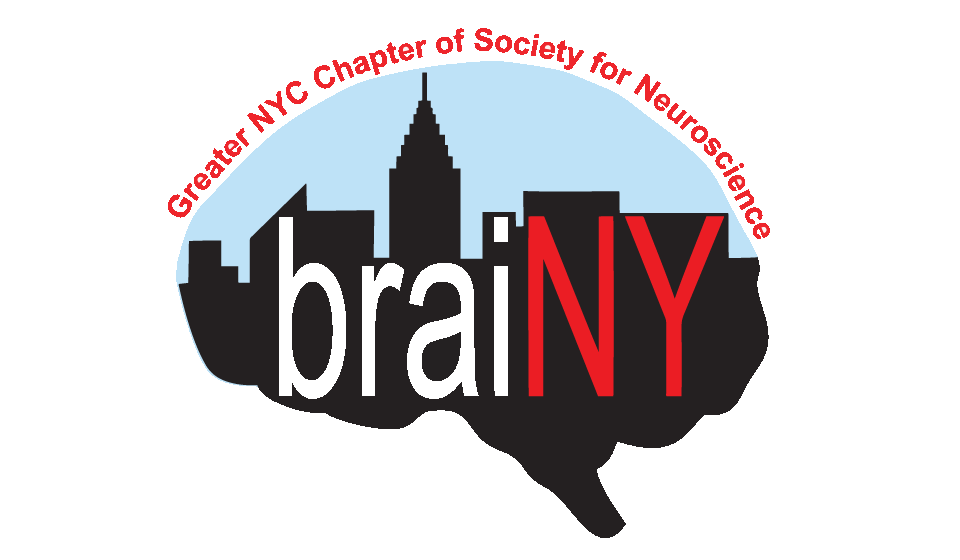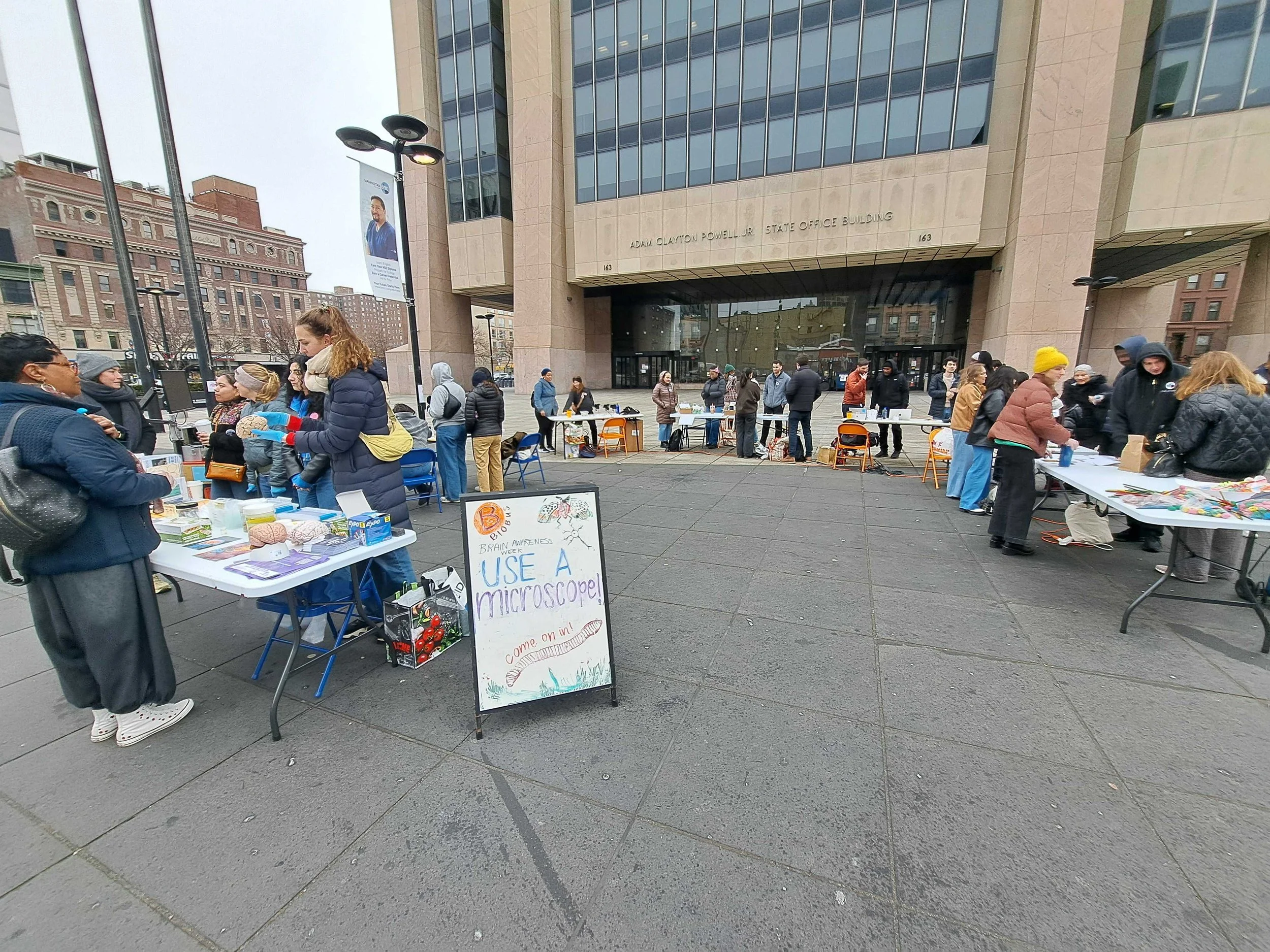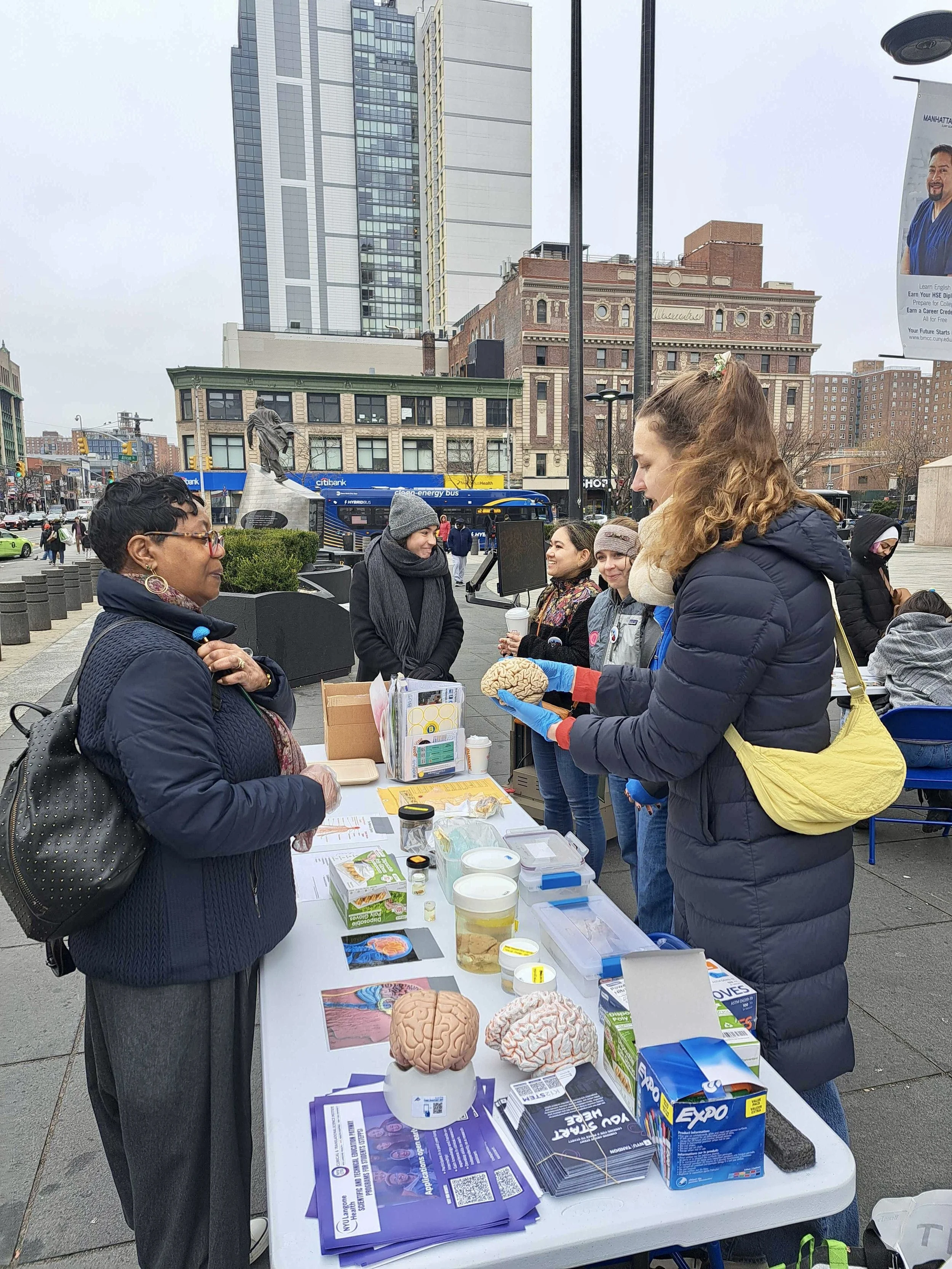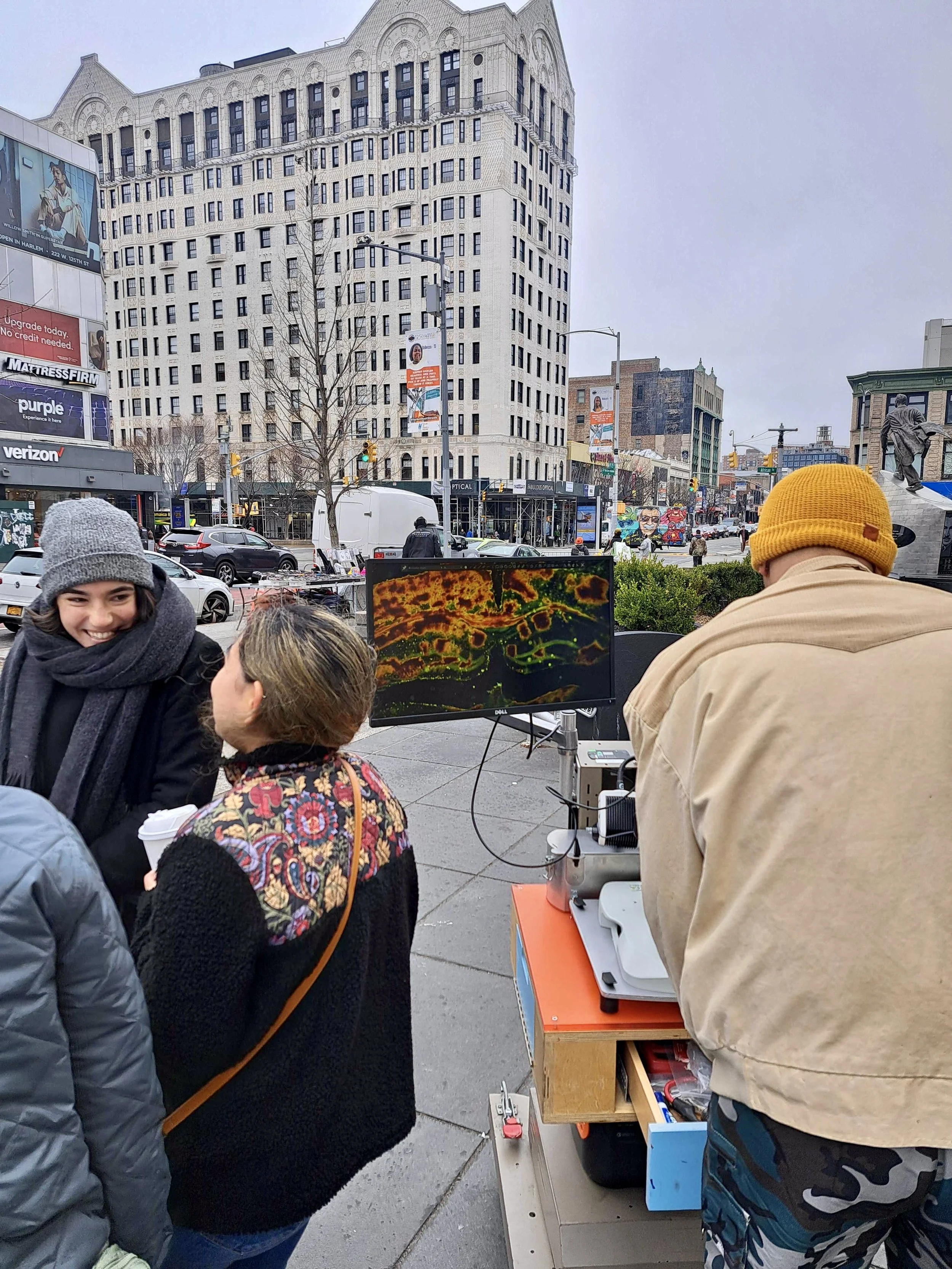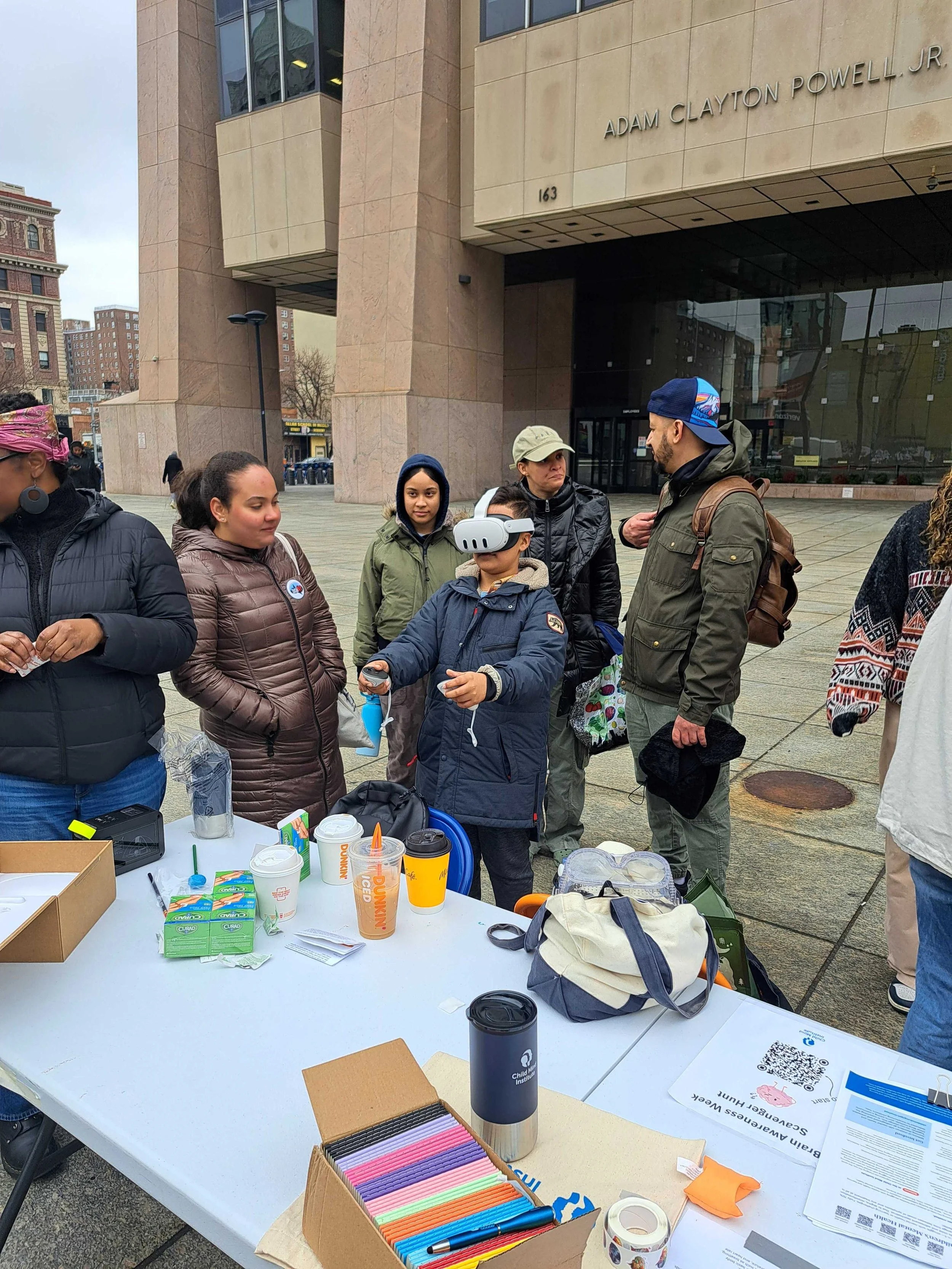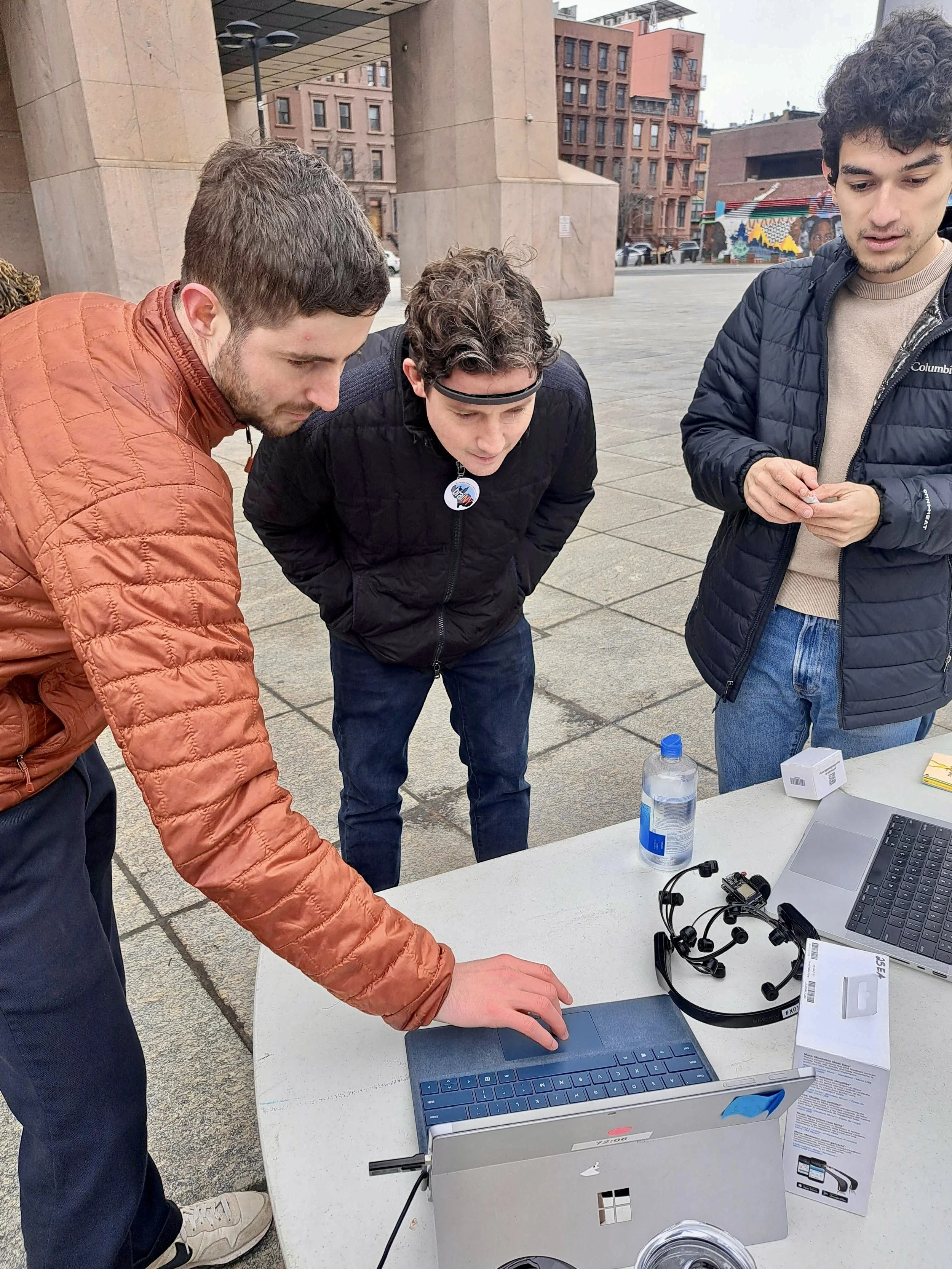Reflecting on Brain Awareness Week 2025
“What is this all about?”
On a windy day in March, pedestrians passing along Adam Clayton Powell Boulevard in East Harlem were presented with an unexpected sight: a collection of real-life brains. A row of clear containers held samples ranging in size from a mouse brain no larger than a grape to a dog brain roughly the size of a lemon. Those who stopped to ask questions were rewarded with an even rarer chance to touch a preserved human brain, which fit nestled in a scientist’s blue-gloved hands. At neighboring tables, visitors oohed and aahed at optical illusions or gazed through the eyepieces of a microscope.
Questions raised by passersby throughout the day included, “Is my brain really THAT size?” and, “What causes Alzheimer’s disease?”, but perhaps most commonly, “What is this all about?”
Tables are set up outside the Adam Clayton Powell Jr. Office Building for the annual BraiNY x BioBus Brain Awareness Week event. Volunteers share a variety of brain-related activities with the East Harlem community.
Brain Awareness Week: Origins and Objectives
Every Spring, BraiNY works with universities, non-profits, and brain scientists of all kinds to bring Brain Awareness Week (BAW) events to the NYC area. BAW was developed by the Dana Foundation over two decades ago, as a way to share neuroscience with the public. Though BAW typically occurs in the second week of March, the list of events, programs, and volunteer opportunities often extends throughout the month.
The success and longevity of BAW underscores people’s interest and investment in neuroscience research. Now more than ever, speaking with our communities about the brain reminds us of the importance of making science accessible and engaging for everyone.
Nearly everyone has questions about how their brain works, how they can keep their brain healthy, and what causes brain diseases. A survey conducted by the Dana Foundation and Research!America found that 80% of Americans are impacted by brain health issues, while 67% believe that brain research can benefit them. However, 66% feel that they know very little about brain health research. Meanwhile, trends in Pew survey data collected between 2019 and 2023 suggest a decline in overall trust that science and scientists will positively impact society.
As scientists, BAW gives us an opportunity to hear concerns, offer answers, and include the public in the ongoing conversations around brain science, in order to re-build and maintain trust in our communities.
Volunteers display brain specimens to passersby. Animal brains in clear containers are displayed on the table, and a volunteer holds a preserved human brain.
A screen displays an image of a brain tissue specimen viewed under a microscope.
Brainy Activities Across NYC
This year, BraiNY council members and volunteers could be found in East Harlem on March 15th, displaying real-life brains of all shapes and sizes as part of our annual collaboration with BioBus, a group that brings science to K-college students, primarily through their mobile lab (THE BioBus). Scientists and volunteers from NYU, Mount Sinai, and Rockefeller also supported the event, which offered a variety of activities from microscopes and optical illusions to perception-bending games and brain-inspired crafts.
In honor of this year’s theme, “Technology and the Brain,” volunteers from MindHive, a collaborative research platform for students, educators, and researchers, invited participants to try out portable technology that quantified their brain waves and body movements. One table over, visitors tested their motor skills in a game played through VR goggles. Another new collaborator this year was the Child Mind Institute, an independent nonprofit dedicated to transforming the lives of children and families struggling with mental health and learning disorders, who ran a scavenger hunt filled with information and resources about mental health and technology.
A participant dons a VR headset to test their motor skills.
A participant wears an EEG headset that records their brain activity, while volunteers from MindHive walk them through the resulting signals on a tablet screen.
Volunteers guide kids through the process of crafting “brain hats” at the NY Hall of Science.
The following day at the NY Hall of Science (NYSci), a science museum in Queens, BraiNY worked with BioBus and museum staff to continue the fun – bringing brains, illusions, sensory experiments, and build-a-neuron crafts to museum visitors. Throughout the weekend, BraiNY volunteers could also be found sharing brain specimens and facts about the brain’s evolutionary history at the American Museum of Natural History’s Hall of Human Origins Educational Laboratory.
“It was fantastic to collaborate with so many New York City-based organizations that are deeply committed to making science accessible to all and creating a meaningful impact in their communities,” said current BraiNY President Arianna Zuanazzi, emphasizing the importance of fostering scientific curiosity and learning beyond traditional spaces like universities and laboratories.
Engaging Scientists of All Ages
While BraiNY’s activities aim to reach community members of all ages, many volunteers particularly enjoyed engaging with our youngest visitors. “The youngest students asked the most interesting questions that made me really sit and think,” said volunteer Garret Blair, a postdoctoral fellow in the Center for Neural Science at NYU, “They're not afraid to question really essential concepts that we often take for granted.”
Unburdened by scientific dogma, kids can bring a new perspective, encouraging more senior scientists to see things with new eyes. One volunteer said that their favorite moments were seeing the surprise and curiosity on kids’ faces as they encountered brain specimens and brain facts for the first time, while another expressed hope that these events will inspire young people from marginalized communities to explore and pursue careers in science.
Kids weren’t the only ones bringing their curiosity, however. “I am often struck by enthusiasm from adults at these events,” said Lauren Vetere, a neuroscientist and BraiNY council member. “Perhaps because they have fewer opportunities to engage with science, or because they have a lifetime of experiences highlighting the importance of brain health, they often ask thoughtful questions about the health and function of their brains. They sometimes even suggest insights for research based on their personal experiences with a brain disease or disorder.” With 62% of Americans believing that patients should have more of a voice in setting research priorities, these conversations raise important philosophical and ethical questions about how we decide what problems we study, and who gets to influence those decisions.
"It is more important than ever to engage with the general public about science,” said volunteer Amanda Amilcar, a 2nd year PhD student at NYU. “I believe that it is our responsibility as scientists to inform and excite the general public about modern research projects and techniques.” As we work towards making scientific information accessible for all, one thing remains true: the brain inspires all of us to learn more about its inner workings, ourselves, and each other.
Get Involved
If you’d like to get involved with BraiNY during future BAWs (and all year long), you can subscribe to our mailing list to get updates about upcoming events and volunteer opportunities, or check out our calendar. For more about who we are and what we do at BraiNY, stay tuned for an upcoming blog post about our history and new directions.
Edited by Lauren Vetere, Violet Ivan, and Arianna Zuanazzi.
Photos by Catherina Mobini and Arianna Zuanazzi
Editor’s Note: Thoughts expressed by BraiNY members and volunteers are their own and do not represent the views of their employer or institution.
